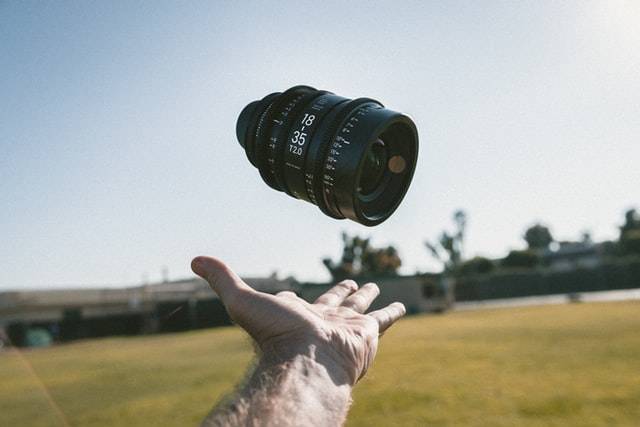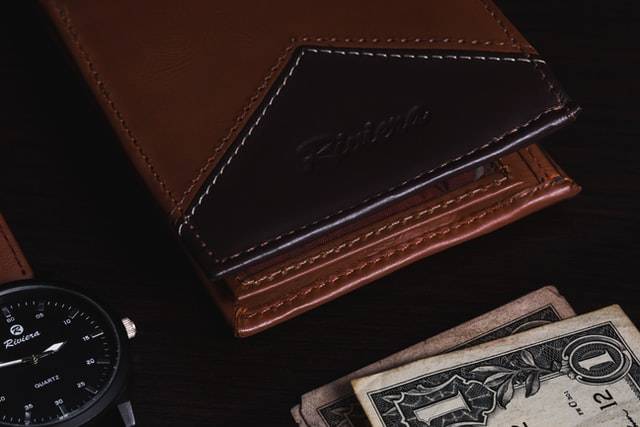You will be able to make the best use of your Nikon D5300 if you have a few solid lenses in your collection. Having different lenses such as zoom, prime, and wide lenses will enable you to capture diverse photographs and experiment with multiple styles, locations, frames, and subjects. Here are some of the best lenses for Nikon D5300 for amazing photography.
Best Prime Lenses for Nikon D5300
Prime lenses are well-known for their ability to capture better quality pictures with their superior low-light performance. They have high apertures which let you capture images with amazing background blur. They also tend to have a faster focusing mechanism than other lenses. The small and compact size of prime lenses can be a huge plus if you carry a lot of gear with you.
1. Nikon AF-S DX Nikkor 35mm F1.8G

Technical Details
The optical design of the Nikon 35mm f 1 8g lens includes 8 elements in 6 groups. It has an aspherical element that helps combat chromatic aberrations that are generally found in large-aperture prime lenses.
It has a maximum aperture of f1.8, which means it admits light is four times more than what is possible through the 18-55mm kit lenses. The high aperture is also great for shooting under low lighting conditions and helps you to keep the shutter speeds high on your Nikon D5300.
Imaging and Autofocus
The 35mm f 1 8 lens features a ring-type ‘silent wave motor’ that works well with the autofocus in every Nikon DSLR camera model, including the Nikon D5300. It also allows you to manually tweak the focus while it is under the AF mode, by setting the lens to M/A mode. The motor works pretty fast and does not make any noise.
Lens Body
The Nikon 35mm f 1 8g lens makes use of Nikon’s classic F-mount which makes it suitable for all Nikon DX and FX-format DSLR models such as the Nikon D5300. It interacts electronically with the camera body through a series of contact pins, while the aperture is mechanically controlled through a metal lever.
The circumference of the mount has a rubber gasket around it which offers protection for your Nikon D5300 against moisture and dust. The filter thread is 52mm in size and does not twist during focus, which lets you use polarizers and neutral density filters.
Specifications
- Weight: 210g (7.4 oz)
- Minimum focus distance: 0.3m (1 ft)
- Focus method: Internal (rear) focus
- Angle of view: 47 degrees
- Diaphragm Blades: 7, rounded
2. Nikon AF-S Nikkor 50mm F1.8G

Technical Details
The new Nikon 50mm f 1 8g comes with an upgraded optical design that incorporates 7 optical elements in 6 groups. One of them is an aspherical element which helps in reducing coma and chromatic aberrations. This 50mm lens is the first Nikon lens that includes an aspherical element – even the more expensive Nikon 50mm f/1.4G does not include one. Super Integrated Coating has been applied to avoid ghosting and flares.
Imaging and Autofocus
The 50mm f 1 8g lens makes use of a silent wave auto focus motor system that delivers a quiet and smooth focus performance. It allows the lens to fully work with entry-level DSLRs such as the Nikon D5300.
A huge advantage of this AF-S motor is the ability to use a manual focus override along with the auto focus, which is not available on the AF-D lenses. Although the Nikon lens is supported by both full-frame (FX) and APS-C (DX) sensors, it is more ideal for FX sensors as far as everyday photography is concerned. The lens provides a focal length of 75mm on DX sensors, which makes it one of the best lenses for portrait photography. The 7-blade diaphragm of the Nikon lens produces a heptagon shaped bokeh at apertures larger than f/2.
Lens Body
The improved optical design of this fixed focal length lens features a larger barrel. The front element does not rotate or extend during focusing, thereby making the lens more durable. It also makes the Nikon lens compatible with circular filters and filter holders, making it one of the best lenses.
Specifications
- Weight: 185 g (0.41 lb)
- Minimum focus distance: 0.45 m (17.72″)
- Focal Length: 50mm
- Aperture: f 1 8 – f/16
- Diaphragm Blades: 7, rounded
3. Nikon AF-S Nikkor 85mm F1.8G

Technical Details
The Nikon 85mm f 1 8g includes a new optical design comprising 9 elements in 9 groups. To reduce ghosting and lens flare, Super Integrated Coating has been used. The newer lens design weighs 30 grams less than its predecessor.
The lens is compatible with both Nikon DX and FX-format cameras. The lens provides a focal length of 128mm on DX sensors, which can help you capture some tight portrait shots. The Nikon lens has a rounded diaphragm made of 7 blades, which produces a better-looking bokeh than the 9-blade straight diaphragm in the older lenses.
Imaging and Autofocus
The front elements in this Nikon 85mm f 1 8 lens does not rotate or extend during the autofocus process, which makes it one of the best lenses for using filter holders and circular filters. The lens uses a silent wave motor (AF-S) system, which is capable of focusing quickly on your subject without making a sound. This motor system makes the lens compatible with a DSLR camera such as the Nikon D5300. The AF-S motor also offers a manual focus override feature, which lets you manually adjust the focus alongside the auto focus mechanism.
Lens Body
The Nikon lens comes with a solid plastic exterior and a metal mount. The rubber gasket on the lens mount helps in preventing dust from getting into the camera. The 67mm filter thread can accommodate filters based on that size. The focus ring is located on the front of the barrel, making it convenient to manually focus using your fingers while recording a video or capturing pictures.
Specifications
- Weight: 350 g (0.77 lb)
- Minimum focus distance: 0.80 m (31.5″)
- Focal Length: 85mm
- Aperture: f/1.8 – f/16
- Diaphragm Blades: 7, rounded
Best Zoom Lenses for Nikon D5300
Zoom lenses or telephoto lenses are versatile in terms of their function – they allow you to capture a subject that is closer or farther from you without changing your position. The best zoom lenses or telephoto lenses have a variable focal length and zoom range which can go as high as 1000mm or more. There two kinds of zoom lenses – variable aperture and constant aperture. Different varieties of telephoto lenses are available for different purposes such as wildlife, sports, or other forms of telephoto photography.
1. Nikon AF-S DX NIKKOR 55-200mm f/4-5.6G ED VR II

Technical Details
The optical system of this telephoto lens includes 13 elements in 9 groups, with one of them being an ED glass element which helps you avoid chromatic aberrations. The elements in this Nikon lens come with Super Integrated Coating which helps you to get the best image quality possible by reducing internal reflections. The lens offers a maximum aperture of f/4.
Imaging and Autofocus
The Nikon 55 200mm f 4- 5 6G ED DX VR II includes an in-built auto-focus motor that is compatible with every Nikon DX-format camera model such as the Nikon D5300. There is no internal focusing, and you can use the manual override while the selector is set to the “A” position.
This Nikon telephoto zoom lens has a 4-stop Vibration Reduction image stabilization system, which helps to reduce the effect of Nikon D5300 camera movements to derive the maximum image quality. You will be able to capture sharper images at low light and slower shutter speeds. The diaphragm of the telephoto zoom lens consists of nine rounded blades that produce a high-quality bokeh behind your subject.
Lens Body
The Nikon AF-S DX NIKKOR 55-200mm f/4- 5 6G ED VR II is mostly made of plastic, including the lens mount. This makes it one of the most lightweight zoom lenses, weighing only around 255g. The rubber sealing around the Nikon lens mount provides adequate protection against dust for your Nikon D5300.
Specifications
- Weight: 255g (9 oz)
- Minimum focus distance: 0.95m (3.1 ft)
- Focal Length Range: 55 – 200mm
- Aperture Range: f/4-5.6 to f/22-32.
- Diaphragm Blades: 9, rounded
2. Nikon AF-S DX Nikkor 55-300mm f/4.5-5.6G ED VR

Technical Details
This Nikon 55-300mm f 4 5 – 5.6G zoom lens is designed for Nikon DX cameras in particular. It has a 35mm equivalent focal length of 85-450mm. This Nikon lens includes two Extra-low Dispersion (ED) Elements as part of its optical system. They help reduce chromatic aberrations and thereby improve image quality in your Nikon D5300.
Imaging and Autofocus
This Nikon zoom lens comes with Vibration Reduction technology that comes useful when capturing a subject that is very far away. You can easily achieve maximum image quality while using vibration reduction and take pictures at slower shutter speeds and low light conditions without blurring.
Lens Body
This Nikon 55-300mm f 4 5 – 5.6G zoom lens has a plastic body and a metal mount. Despite having 17 optical elements in 11 groups, it weighs as little as 580 grams.
The Nikon lens has a gigantic zoom ring that takes up almost half of the lens barrel. The large size also makes it easier to zoom in and out with your left hand while operating the Nikon D5300 camera with your right.
Specifications
- Weight: 580g
- Minimum focus distance: 1.4m (4.6ft)
- Focal Length Range: 55-300mm
- Aperture Range: f/4.5-5.6 to f/22-29
- Diaphragm Blades: 9, rounded
3. Tamron AF 70-300mm F/4-5.6 Di LD Macro

Technical Details
Di stands for Digitally Integrated, which is a designation used by Tamron to describe lenses that have been designed for use with DSLR cameras like the Nikon D5300. The lens uses Internal Surface Coatings and multi-layer coating technology to reduce flares and ghosting when light enters through the front elements. LD glass elements help in reducing aberrations.
Imaging and Autofocus
The Tamron AF 70-300mm f/4-5.6 Di LD Macro Lens is compatible with Nikon SLR models such as the Nikon D5300. It has an in-built focusing motor which works wells with the autofocus systems in all Nikon cameras. The focusing motor delivers fast and quiet performance.
Lens Body
The lens is quite compact and feels lightweight, thereby making it easier to handle. A metal lens mount has been used which is capable of withstanding many lens changes.
Specifications
- Weight: 435 g (15.34 oz)
- Minimum focus distance: 4.92′ (1.5 m)
- Focal Length Range: 70-300mm
- Aperture Range: f/4-5.6 to f/32
- Diaphragm Blades: 9
4. Nikon AF-S DX Nikkor 18-300mm f/3.5-5.6G ED VR

Technical Details
The lens works only with DX-cameras, where you will get an equivalent zoom range of 27-450mm. The optical design incorporates both extra-low dispersion elements and aspherical elements. The elements have a super integrated coating applied to them which helps to reduce ghosting and flare, allowing you to work against strong lighting.
Imaging and Autofocus
The lens optics makes using a VR image stabilization system which is effective up to 4-stops. This feature helps you to avoid motion blur in your images, especially while working handheld. The Silent Wave Motor delivers fast and quiet autofocus including a manual focus override mode.
Lens Body
The Nikon AF-S DX Nikkor 18 300mm f 3 5 – 5.6G ED VR lens comes with a series of switches on the side to customize stabilization and focusing. The top switch lets you switch between Manual focus (M) and Autofocus with manual override (M/A) modes. The switch next to it is used to turn on or off the stabilization function. Another switch at the bottom can be used to select the VR mode. On the left of these, you can find another switch that will help you to lock down the lens at the 18mm position which will stop it from extending. A rubber O-ring surrounds the lens mount to keep out moisture and dust from getting inside.
Specifications
- Weight: 550 g (1.21 lb)
- Minimum focus distance: 1.57′ (48 cm)
- Aperture: f/22 to f/3.5 – 6.3
- Focal Length: 18 to 300mm
- Diaphragm Blades: 7, Rounded
Best Wide-Angle Lenses for Nikon D5300
Wide-angle lenses display a wider field of view than that of our vision. A popular notion is that any lens that has a focal length lesser or equivalent to 35mm is considered to be a wide-angle lens. Wide-angle lenses can come in the form of variable zoom lenses or fixed prime lenses.
1. Sigma 10-20mm f/4-5.6 EX DC

Technical Details
This Sigma wide-angle lens comes with an optical system that includes 14 elements in 10 groups. It has elements that have special coatings applied to them to reduce internal reflections. Two-hybrid aspherical elements and one glass aspherical element have been provided to control chromatic aberrations.
Imaging and Autofocus
An HSM Motor has been used in this Sigma wide-angle lens for quick and sharp image production. The motor focuses without moving the elements. The front elements do not rotate while it is being used, which makes it convenient for you to use filters. The Sigma lens has a 77mm filter thread.
Lens Body
The Sigma wide-angle lens has a durable matt black finish that looks amazing. It has an AF/MF switch located in front of the mount. The rest of the barrel has been divided into thirds – the first and the last sections include a focus ring and a zoom ring. The zoom ring has markings at 20, 17, 14, 12, and 10mm.
Specifications
- Weight: 470 g (1.04 lb)
- Minimum focus distance: 0.24 m (9.45″)
- Focal Length: 10–20 mm
- Aperture: F4–5.6 to F22–32
- Diaphragm Blades: 6, rounded blades
2. Nikon AF-S Nikkor DX 10-24mm f/3.5-4.5G ED

Technical Details
The Nikon lens has a close-focus point of 24 cm. It has an iris diaphragm consisting of seven rounded blades. The optical system of this Nikon lens has 14 elements in 9 groups among which are two aspherical and two ED elements.
Imaging and Autofocus
An internal focusing system along with a Silent Wave Motor has been utilized in this AF-S Nikkor DX 10 24mm f 3 .5-4.5G ED lens. The autofocus performance is fast and accurate. The focus ring can be used for manual override whenever you want. Since the front of the lens does not rotate while focusing, this Nikon lens is great for using with a graduated neutral density filter or a polarizer filter.
Lens Body
The Nikon lens has a decent build quality. It features a metal mount and a barrel made of high-quality plastic. The 77mm filter does not rotate while working. The zoom ring on the Nikon lens is wide and has a rubberized grip band with ridges for convenience. The length of the lens changes while zooming since it does not happen internally.
Specifications
- Weight: 460 g (1.01 lb)
- Minimum focus distance: 0.24 m (9.45″)
- Focal Length: 10–24 mm
- Aperture: F3.5–4.5 to F22–29
- Diaphragm Blades: 7
3. Tokina AT-X Pro 11-16mm f/2.8 DX

Technical Details
Since this lens only works with a DX camera, you will be getting a viewing angle that is equivalent to an 18-26mm lens on a full-frame sensor. The lens features an optical system that includes 13 elements in 11 groups. To manage distortion and aberration, one ED element and two aspherical elements have been provided.
Imaging and Autofocus
The Tokina A-X Pro 11 16 mm f 2.8 DX lens features a similar autofocus mechanism as its predecessors. It is quite fast and accurate, even under low-light conditions. However, the motor is not silent like modern autofocus sensors are. This won’t be a problem is you are using the lens for capturing pictures or video without ambient sound.
Lens Body
The lens has a robust build made of plastic and metal. The zoom ring and the focus ring offers adequate friction that allows you to easily control them. The lens has a unique mechanism that lets you easily switch between the manual and autofocus modes. Unlike other lens models, there is no toggle switch that allows you to do this. Instead, you have to pull out the focus ring to switch to autofocus. Pull in the focus ring if you want the manual mode.
Specifications
- Weight: 560 g (1.23 lb)
- Minimum focus distance: 0.30 m (11.81″)
- Aperture: f/2.8 – f/22
- Focal Length: 11 – 16mm
- Diaphragm Blades: 9
Best Macro Lenses for Nikon D5300
A macro lens is a specialized digital SLR camera lens that has been designed optically to process focusing distances that are extremely close. Macro lenses are used to capture microscopic subjects at the best and most detailed image quality possible. These lenses have a magnification ratio of 1:1 and a minimum focusing distance of 12 inches or less.
1. Nikon AF-S DX Micro-NIKKOR 40mm f/2.8G

Technical Details
The 40mm f 2 8 lens is very small and lightweight, only 4 ounces heavier than the Nikon 50mm prime. Its optical design includes 9 elements in 7 groups. The elements in this 40mm f 2 8 have a Super Integrated Coating that vastly reduces any ghosting or lens flare. This 40mm f 2 8 lens can only be used with a DX-format camera such as the Nikon D5300.
Imaging and Autofocus
The Nikon 40mm f 2 8g lens has a 1.0x reproduction ratio. It has a minimum focus distance of 0.53 ft from the sensor. The seven semi-rounded diaphragm blades help to produce a pretty bokeh in your pictures.
A close focus limiter switch has been included in the Nikon 40mm f 2 8g to speed up the autofocus process. You can limit the focus from infinity to 0.2 meters. The Nikon 40mm f 2 8g lens can focus very fast while capturing non-macro subjects. The autofocus speed may drop on focusing on close subjects, in which case, the manual focus mode on this f 2 8 lens is more reliable.
Lens Body
The 40mm f 2 8 lens has a body made from plastic along with a metal mount. A rubber gasket has been attached to the f 2 8 lens mount to keep away dust. You can switch between the focus modes using the M and M/A toggle on the side of the 40mm f 2 8 macro lenses.
Specifications
- Weight: 235 grams (approx.)
- Minimum focus distance: 16.3 cm
- Focal Length: 40mm
- Aperture: f 2 8 – f/22
- Diaphragm Blades: 7, rounded
2. Tamron SP 90mm f/2.8 Di Macro VC USD

Technical Details
The optical design of the lens includes 14 elements in 11 groups, one of them being a low-dispersion glass element while there are two extra-low dispersion elements. The lens elements come with BBAR+ eBAND coating that reduces flares and reflections in your images. The front element uses a fluorine coating to prevent moisture and smudges from entering the lens.
Imaging and Autofocus
The Tamron 90mm lens makes use of an Ultrasonic Silent Drive autofocus motor which is capable of focusing silently, quickly and accurately. The lens also comes with optical image stabilization which is effective up to 3.5 stops. It comes in handy while shooting at slower shutter speeds and under low-light conditions.
Lens Body
The lens design uses metal on the mount and the lens barrel. Plastic has been used on the front on the lens barrel and on the switches on the side. The focus ring operates smoothly and has a noticeable stop at the end of the focusing range on each side. A glass element on the rear side of the lens has been provided to protect the internals which does not move with during focusing.
Specifications
- Weight: 600g
- Minimum focus distance: 0.30m
- Aperture: f/32 to f/2.8
- Focal Length: 90mm
- Diaphragm Blades: 9, rounded
Conclusion
Using the best lenses for Nikon D5300 you will be able to easily achieve your goal of capturing the perfect picture. They will test your skills as a photographer and help you unleash your true image-making potential.








